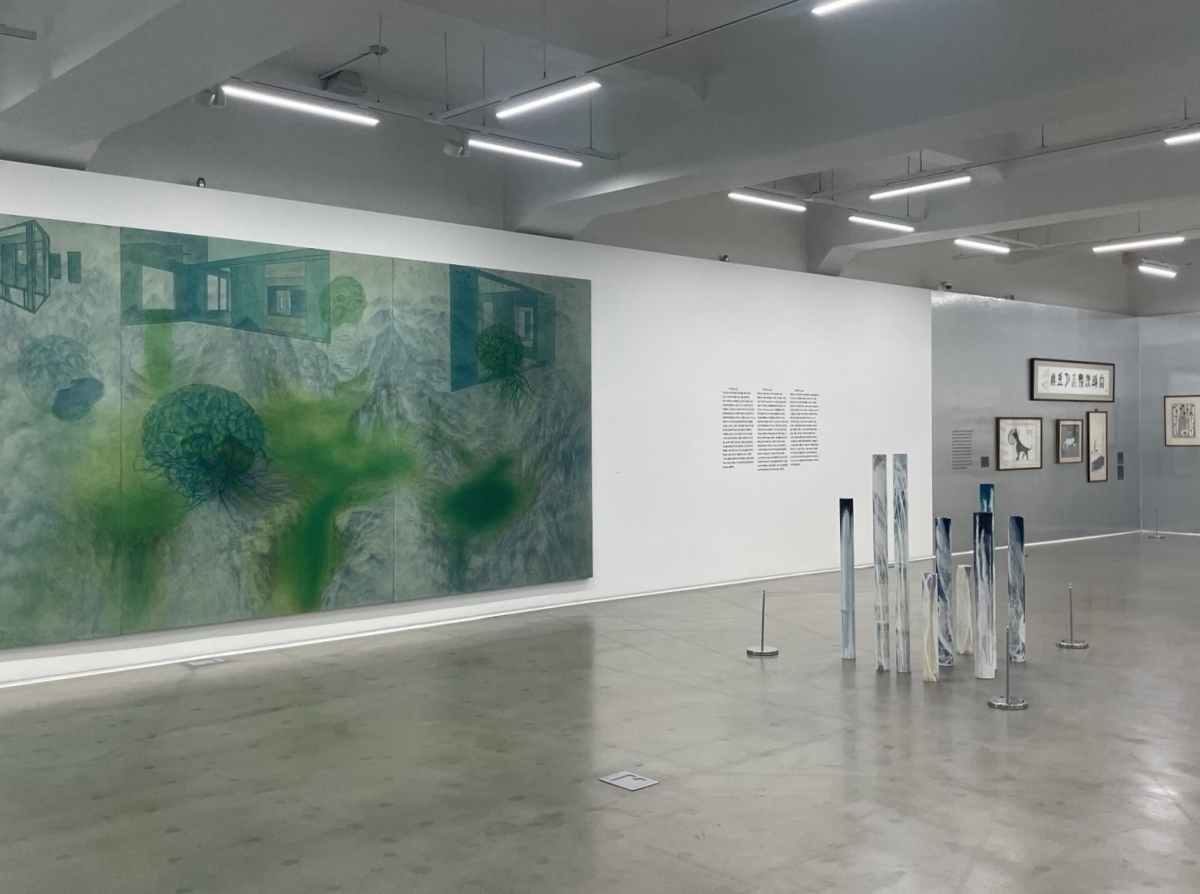SPACE January 2023 (No. 662)

Exhibition view of ‘Korean Traditional Painting in Alter-age’ / ©Youn Yaelim
Since Oct. 28, Ilmin Museum of Art is holding an exhibition titled ‘Korean Traditional Painting in Alter-age’ that displays the present state of Korean traditional painting. The exhibition is composed of two timelines: the artworks of figures in Korean traditional painting history such as Jeong Seon, Kim Jeonghui, Yi Hwang, and Shin Saimdang on the one hand, and the artworks of 13 contemporary artists that were created in the 2000s on the other. The traditional and contemporary artworks juxtaposed in each exhibition hall from the lobby to the third floor face one another, indifferent to the centuries that divide them. These artworks question and answer how Korean traditional painting – which is founded on tradition – continue to exist and influence today. While much tradition and conceptualising in Korean traditional painting have become discontinued and lost, through copying and referencing, efforts to blur the boundary between original and copy, authentic and inauthentic, and familiar and foreign have been introduced to draw out Korean traditional painting from the past to the present moment. These time-transcending contemporary artworks such as Hanyang (2022) by Son Donghyun, which is an eight-piece folding screen that recreates Jeong Seon’s landscape painting in a modern art style, Holy make-up (2022) by Park Grim, which is reminiscent of one of the hand gestures of Buddha statues as well as the hand movements typically seen in cosmetic product adverts, and Reprocessing ‘Mong u do won do (1447)’ (2014) by Choi Haeri, which has an uncanny and discomfiting resemblance to An Gyeon’s painting, all somehow in their own way serve to bridge the gap between the two timelines. Through this, the exhibition introduces Korean traditional painting not as one of that of discontinuity but that of continuity. The Korean traditional painting of today must find a way of establishing itself as a unique field and concept that is locally rooted and yet distinct from traditional art. The exhibition will last until Jan. 8.




